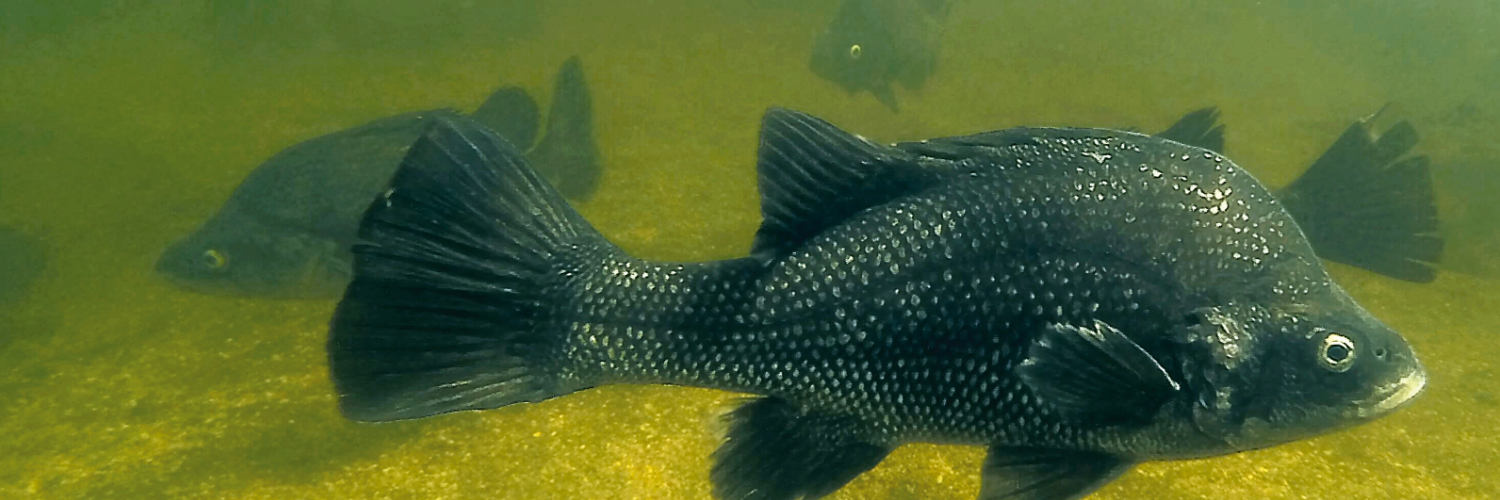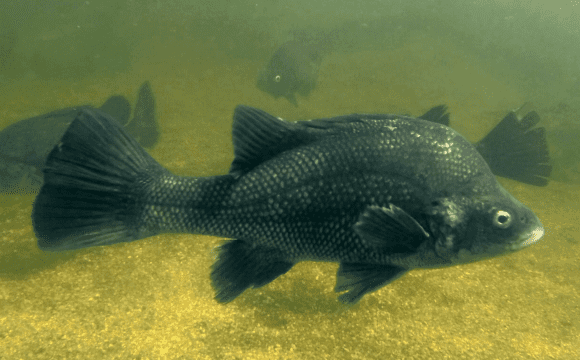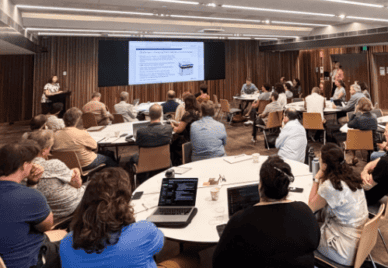
Banner image: Macquarie perch, Dartmouth Lake. Courtesy of Zeb Tonkin
The endangered Macquarie perch was once widespread across the Murray-Darling Basin but human-built river barriers and other human-induced threats have caused it to become locally extinct in most parts of its former range. Only a few isolated populations remain.
The fish need to swim upstream to breed, laying their eggs onto rocks where they are aerated by riffles in the creeks – an essential process for the eggs to develop. The lowland populations trapped downstream of the barriers have died out.
Managing for Genetic Diversity, Not Just Abundance
In the past, the recovery plan might have been to stock a shrinking population with hatchery-bred offspring from a single population, after mitigating the environmental threats.
Now, genomic testing conducted by a team of researchers working on an ARC Linkage project – which included the sequencing of the entire Macquarie perch genome – has found that isolated populations have a low chance of survival on their own and fish managers should be mixing them up.
“We don’t know yet whether they have adapted in different ways”, says molecular ecologist Dr Alexandra Pavlova, Monash University, who co-leads the ARC Linkage project with Professor Paul Sunnucks. “But we know that the genetic diversity of most populations is so low that they might be suffering from inbreeding and loss of fitness as a result. Mixing them up would reverse this trend.”
Inbreeding can lead to an unhealthy population, which can lead to extinction. And while managing for genetic diversity as well as for abundance of the fish is a relatively new concept, all of the project’s recommendations have been incorporated into the species’ National Recovery Plan.
Nectar Research Cloud Provides the Power
Even for a fish, genome sequencing needs serious computer grunt, and Dr Pavlova is grateful for being able to secure an allocation of computational resources on the ARDC Nectar Research Cloud.
“We purchased our own hardware in the beginning but it kind of started to break down and needed a lot of maintenance”, says Dr Pavlova.
“The allocation on Nectar was a huge help for our lab. Next-generation sequencing yields huge files, even when compressed. You have to use Linux machines and command line interface to process the data. And that’s what Nectar provided – Linux machines with huge computing power and storage capacity. Most of our analyses were done on these machines, which was invaluable.“
Monash eResearch Centre assists with managing the virtual servers on Nectar. Most of the storage capacity was secured through a merit allocation, which is now supported by the ARDC.
Genomic Testing – It’s a Long Process
Genomes are measured by the number of ‘bases’, the chemical components of DNA and RNA, and the Macquarie perch came in at 675 million bases. Even with the power of Nectar Research Cloud, analysing genomic data takes a staggering amount of time.
“The latest analysis we are running is genotyping whole-genome resequencing data for 75 individuals. It’s already taken two months and it’s not even half finished. That kind of gives you the idea.”
Genome assembly (the computational process) and annotation (listing the genes) takes weeks, says Dr Pavlova. “It’s a long process. Basically, you write a piece of code, submit it on the computer; if the computer doesn’t flick an error, you wait and wait and in a few weeks you may get the happy answer. Sometimes you see that you’ve made an error or your search parameters were not good enough, so you change them and start over.”
To get a good quality genome for one individual fish, they sequenced the genome more than 100 times. Then, to understand variation in the Macquarie perch populations, they sequenced 100 fish more than 15 times.
Working Remotely on Nectar Before and During the COVID-19 Crisis
Since the advent of COVID-19, being able to work remotely on the ARDC Nectar Research Cloud has become more important than ever.
“The servers are accessible from anywhere, so it is great for collaboration. And our PhD students, including one in Mexico and one in Singapore, are able to work from their homes. The big machine runs the jobs, but the interface is actually on your laptop, so we can communicate through our laptops, which is really convenient.
“I think that Nectar is brilliant. We are grateful to those people who invented it and made it available to our lab.”
This article is now a case study – take a look and also see it featured in our impact booklet, Leading Australia to Data-Driven Research Impact.
Learn more about how Australian researchers can use the ARDC Nectar Research Cloud.
The ARDC is funded through the National Collaborative Research Infrastructure Strategy (NCRIS) to support national digital research infrastructure for Australian researchers.
This project was supported through ARC Linkage Grants LP110200017 to Monash University, Flinders University and the University of Canberra, with partner organisation University of Montana, and LP160100482 to Monash University and La Trobe University, with partner organisation University of Canberra.
Funding and other support were contributed by industry partners: Victorian Department of Environment, Land, Water and Planning (DELWP) Melbourne Water and ACTEW Corporation (now Icon Water); along with Diversity Arrays Technology, Zoos Victoria, Environment, Planning & Sustainable Development Directorate (ACT Government), Department of Parks and Wildlife (Western Australia) (now Department of Biodiversity, Conservation and Attractions), Victorian Fisheries Authority, The Holsworth Wildlife Research Endowment — Equity Trustees Charitable Foundation & the Ecological Society of Australia.
Author
Categories
Related Case Studies






